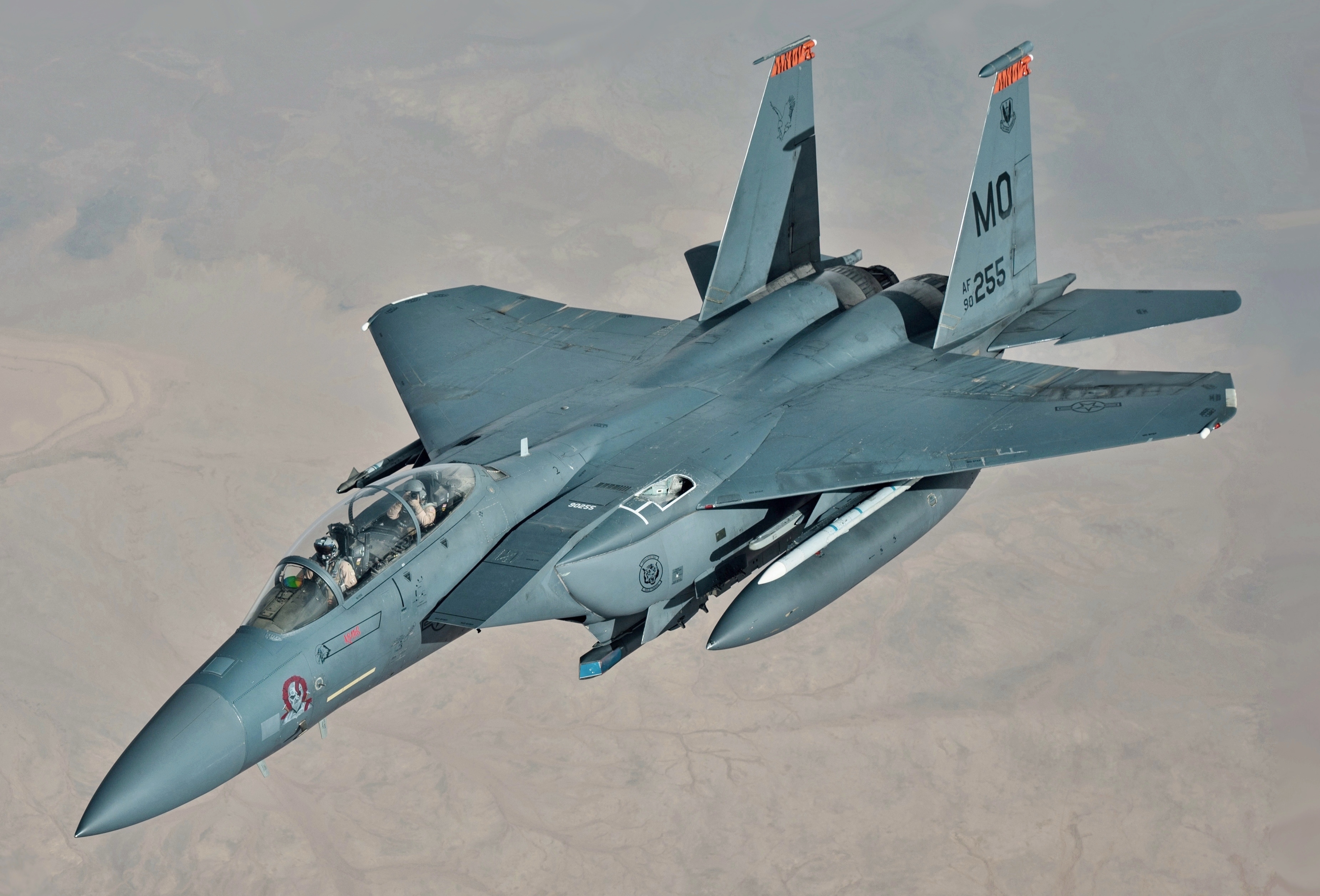The US Air Force has announced that an F-15E Strike Eagle, named “Lucky,” has reached an impressive milestone of 15,000 flight hours during a combat sortie on May 17, 2024. This accomplishment is particularly noteworthy as Lucky is the only F-15E credited with an air-to-air kill, marking a key moment in its operational history.
The achievement was highlighted in a press release issued on July 10, where the Air Force detailed that Lucky reached this milestone while deployed within the US Central Command area of responsibility.
The average service life of an F-15E Strike Eagle is around 10,000 flight hours, making Lucky’s 15,000 flight hours even more exceptional. This milestone is a testament to the dedication and expertise of the maintenance teams who ensure the aircraft’s airworthiness.
One crew member emphasized the rarity of this achievement, stating, “The milestone is unheard of for the airframe, and I am honored to be a part of the team responsible for Lucky’s milestone, especially in a deployed combat environment.”
Lucky, bearing tail number #89-0487, has been in service since 1989. Over its nearly 35 years of service, hundreds of maintenance personnel have supported the platform.
However, one dedicated crew chief has been particularly instrumental in reaching many of its milestones. This US Airman, deployed from North Carolina’s Seymour Johnson Air Force Base, has worked on Lucky since 2019.
Reflecting on their experience, the Airman said, “I have worked on this jet when it reached the 13,000, 14,000, and now 15,000 flight hour mark.”
For decades, the F-15E Strike Eagle has been a cornerstone of US Air Force Central operations, playing a crucial role in assurance and deterrence missions. Its extensive combat history includes participation in Operation Desert Storm, Operation Enduring Freedom, and Operation Inherent Resolve.
The Air Force noted, “The first F-15E was delivered in April 1988, and the 15,000-flight hour milestone leaves a historic mark to the Strike Eagle community and serves as a testament to those who fly, service, and maintain the 219 aircraft in the Total Force inventory.”

Maintaining an aircraft to such a high standard requires immense effort and dedication. “Lots of maintenance, long hours, and many upgrades are needed to ensure jets are ready at a moment’s notice,” said the Airman. “Literal blood, sweat, and tears went into achieving this milestone.”
How The F-15E Scored Its Only Air-to-Air Kill
The F-15E Strike Eagle, with tail number #89-0487, also known as “487,” holds a distinguished place in aviation history for its unique air-to-air kill. This achievement occurred on February 14, 1991, during Operation Desert Storm, involving the F-15E aircraft from the 335th Fighter Squadron of the 4th Fighter Wing.
‘Rare Setback’ For F-15 Fighter: How Russian-Origin AD Missile Shot Down Strike Eagle In 1991
Capt. Richard “TB” Bennett piloted the aircraft, while Capt. Dan “Chewie” Bakke served as the Weapons System Officer (WSO).
On that day, an F-15E Strike Eagle, with tail number #89-0487, was part of a two-aircraft formation conducting a Scud patrol when they received an urgent directive from an AWACS (Airborne Warning and Control System).
They were ordered to eliminate three Iraqi helicopters that were deploying troops in an area where several US Special Forces were operating. As the two Strike Eagles approached the target zone, the aircraft’s radar began experiencing intermittent functionality.
Bakke recounted this challenge in Craig Brown’s book “Debrief: A Complete History of U.S. Aerial Engagements – 1981 to the Present,” explaining that the radar was picking up the rotation of the helicopter blades but couldn’t maintain a lock. Consequently, he switched to the targeting pod to identify the helicopters.

Bakke managed to spot two of the helicopters by their rotor movements in the LANTIRN pod and had to rely heavily on this system due to the radar’s limitations. As he stated, “The radar wasn’t much help at that point. Our mindset was turning to a ground attack…”
TB and Chewie instructed the other Strike Eagle to maintain a high-cover position. Upon receiving confirmation from the AWACS to engage, they armed one of their four GBU-10 Paveway II 2000-lb laser-guided bombs (LGBs).
Bakke described the tense moments before releasing the bomb: TB asked if he was ready, confirming good laser ranging to the target. Despite no technical issues, Bakke hesitated briefly due to a gut feeling. Eventually, he gave the command to release. Upon releasing 2,000 pounds of ordnance, the aircraft immediately responded with a sudden shudder and upward lurch.
At that moment, the targeted Iraqi Mi-24 Hind helicopter attempted to accelerate away. After releasing the bomb, TB executed a left designator turn, but they initially believed the bomb had missed its target. However, the bomb eventually reappeared on Chewie’s display.
Zelensky ‘Unhappy’ With Abrams MBTs; Seeks Dozens Of F-16 Fighting Falcons To Challenge Russia
It angled nose-up before descending, piercing through the helicopter’s rotors, which were visibly disintegrated in the LANTIRN pod. The GBU-10 then entered the helicopter’s cockpit and exploded after exiting the bottom, creating a massive fireball that completely destroyed the helicopter.
Following this successful engagement, Bennett and Bakke attempted to target the remaining two helicopters using their AIM-9 missiles. However, additional Strike Eagles were deployed to attack the remaining Iraqi helicopters, dropping bombs that could have endangered the F-15E. Consequently, TB and Chewie were forced to withdraw from the area.
Although they missed the opportunity to down the other two helicopters, Bennett and Bakke received significant recognition the following day. The headquarters in Riyadh, known as the Black Hole, personally called to thank them for their actions, which resulted in the destruction of the enemy Mil Mi-24 Hind gunship and the saving of 17 US Special Forces members.
The F-15E #89-0487’s air-to-air kill during Operation Desert Storm is particularly remarkable because it utilized a 2,000-pound laser-guided bomb to achieve victory.
- Contact the author at ashishmichel(at)gmail.com
- Follow EurAsian Times on Google News




